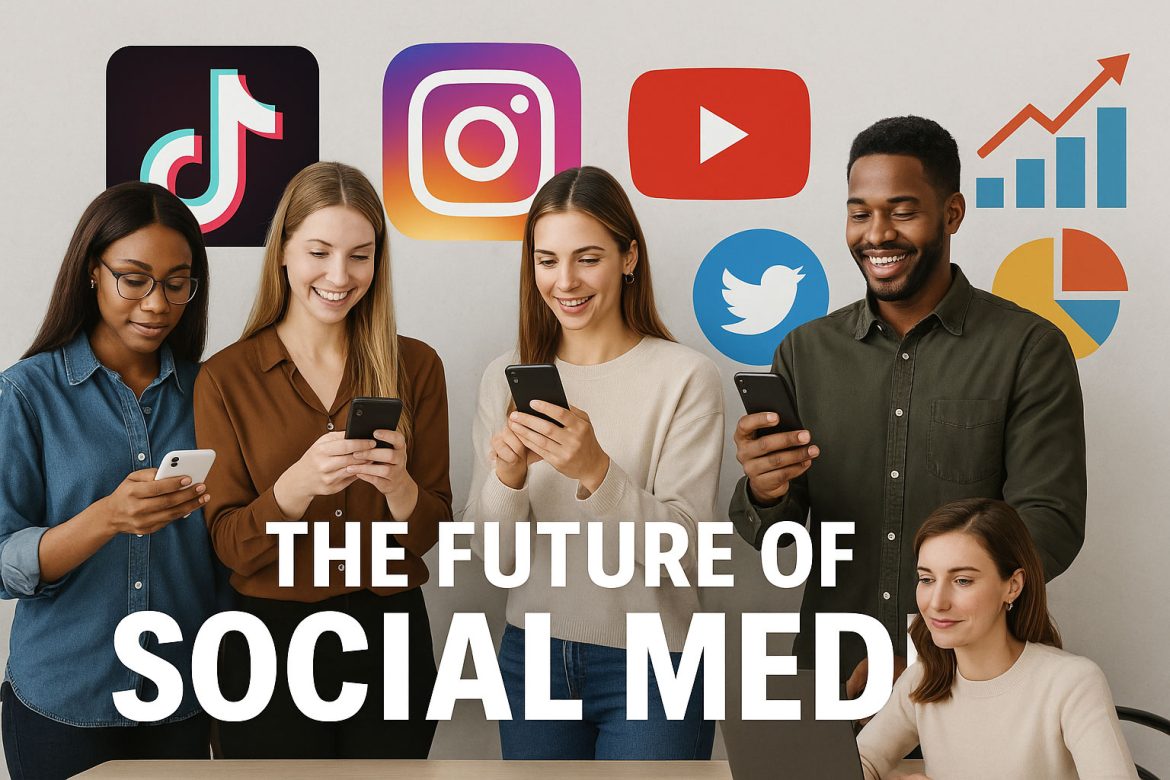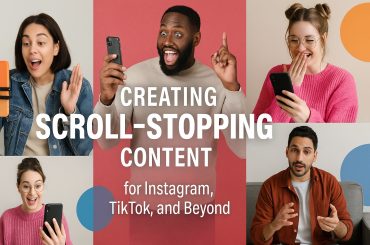Prelude: From Platforms to Ecosystems
What began as status updates has evolved into a multi-dimensional, algorithmically curated, AI-augmented digital arena. Social media is no longer merely a place for sharing—it is where culture forms, relationships deepen, products launch, opinions polarize, and reputations rise or fall.
As we move further into 2025 and beyond, marketers are being forced to adapt not just to platform changes, but to structural shifts in human behavior, technological capacity, and ethical scrutiny.
This essay presents a 1,000+ word deep-dive into where social media is going—and what marketing professionals must begin doing differently now. Not in a year. Not when budgets are approved. Now.
Section I: Platforms Are Becoming Ecosystems, Not Channels
Once, Facebook was for friends, Instagram for photos, Twitter for thoughts, LinkedIn for résumés. That clarity is gone. Today:
- TikTok is a search engine.
- Instagram is an e-commerce platform.
- YouTube is a learning hub.
- LinkedIn is a content powerhouse.
- Reddit and Discord are community economies.
Platforms are blurring into ecosystems, each attempting to capture all audience needs: discovery, conversation, entertainment, education, and conversion.
Key Takeaway for Marketers:
Stop treating platforms as silos. Start building multi-modal content that adapts to cross-purpose use.
Section II: The Algorithm Is No Longer Just Math — It’s Psychology
In the past, cracking the algorithm meant timing posts, using the right hashtags, or posting frequency. Today, algorithms are AI-informed behavioral engines. They don’t just react to behavior; they predict it.
Content is scored based on:
- Watch time (especially first 3 seconds)
- Reaction diversity (comment + save + share > likes)
- Recency and personalization
- Semantic context (what the post means, not just what it says)
What’s New in 2025:
- Dynamic feed reshuffling based on emotional resonance
- Cross-platform behavioral learning (your Google behavior influences your YouTube feed)
- “No two feeds are the same” era in full force
Strategic Shift:
Don’t chase algorithms—optimize for attention psychology.
If people feel seen, heard, helped, or entertained, the algorithm will follow them to you.
Section III: Search Is Shifting Social
The “social-first” mindset is increasingly being joined by “search-first” behavior. Users now type full questions into TikTok or search for product unboxings on YouTube before Googling.
Why?
- Video feels more trustworthy than text.
- Influencer opinions feel more credible than brand messaging.
- TikTok search results are more digestible than SEO-heavy blogs.
Emerging Search Trends:
- TikTok is now the #1 search engine for Gen Z in some regions.
- Pinterest is repositioning itself as a visual search engine, not a social network.
- Instagram keyword search now competes with YouTube Shorts for how-to content.
Marketing Imperative:
If your content isn’t search-optimized for social platforms, you’re missing a top-of-funnel audience that may never enter through Google.
Section IV: Community-Led Brands Are Outperforming Content-Only Brands
Having a great content calendar is no longer enough. The future belongs to brands that build belonging. Those that create spaces where customers become co-creators, advocates, even critics—with permission.
What’s Driving This:
- Users distrust ads more than ever.
- Algorithms boost content that drives conversations, not just impressions.
- The rise of closed ecosystems (Discord, Geneva, private IG groups).
Examples:
- Lululemon’s ambassador groups drive more engagement than many sponsored ads.
- Duolingo’s TikTok comment section has become a self-sustaining fan hub.
- Fenty Beauty’s “real skin” creators outpace celebrities in driving conversions.
Marketing Mindset:
Move from audience-building to culture-building.
Brands that facilitate identity, not just consumption, will lead the next wave.
Section V: Creator Partnerships Are Becoming Strategic Investments
Influencer marketing is maturing. What was once about follower counts and vanity metrics is now about:
- Alignment in values
- Deep audience trust
- Long-term collaboration
2025 sees the rise of brand-creator hybrids, where creators aren’t just endorsers but:
- Co-designers of product lines
- Investors in launches
- Partners in media monetization
New Models:
- Creator equity deals instead of flat fees
- Affiliate-first partnerships that scale with performance
- Content studios within brands where creators lead campaigns from ideation to distribution
Insight:
Treat creators like partners, not billboards. Their audiences can smell inauthenticity faster than any marketer can write a brief.
Section VI: AI Is Changing Creation — But Strategy Still Wins
Generative AI has democratized content creation. Tools like ChatGPT, Midjourney, Runway, and Descript now allow brands to:
- Repurpose long-form content into micro-content at scale
- Generate video clips with automated B-roll
- Write captions, hooks, and email intros in seconds
- Build synthetic avatars for 24/7 presence
But here’s the catch: Speed isn’t strategy.
AI is a tool. What matters now is your editorial brain: how you curate, connect, and communicate. The best marketers in 2025 will use AI to:
- Test faster
- Learn faster
- Deploy faster
… But always with human resonance.
Rule of Thumb:
Let AI accelerate the how. But never let it replace the why.
Section VII: Metrics Are Evolving — And So Should Your KPIs
“Likes are a vanity metric.” We’ve heard it. But in the age of algorithmic nuance and community culture, metrics mean more than numbers:
| Old Metric | New Interpretation |
|---|---|
| Likes | Signal of design clarity and content fit |
| Saves | Proxy for perceived value or utility |
| Comments | Indicator of brand intimacy or controversy |
| Shares | Measure of cultural relevance or identity |
| Followers | Currency of potential—but not performance |
| Clicks | Still vital—but context is everything |
Measurement Priority:
Track conversation and conversion, not just consumption.
Section VIII: What Marketers Must Do Now
1. Revisit Your Content Architecture
Build for humans, structure for platforms. Ensure every piece of content:
- Delivers emotional clarity
- Has a hook for both scrollers and searchers
- Ties into a broader campaign arc or narrative
2. Map Creator-Brand Synergies
Identify creators not just by niche, but by values, tone, and content cadence. Create multi-quarter campaigns, not one-off shoutouts.
3. Build Private Channels
Start a community where you own the reach—whether on Slack, Discord, SMS, or email. Feed it with value. Grow it with identity.
4. Train Your Team in AI, But Hire for Empathy
Teach content managers prompt engineering and AI editing—but recruit creatives who understand behavior, storytelling, and timing.
Conclusion: The Platforms Will Evolve—Your Brand Voice Must Endure
Social media’s future won’t be defined by the next app, algorithm, or interface. It will be shaped by how well your brand builds emotional resonance at scale.
The tools will change. The rules will shift. But the brands that succeed will be those who:
- Show up authentically
- Serve generously
- Speak with clarity
- Listen with humility
- And earn attention—over and over again
Because the future of social media isn’t about who speaks the loudest. It’s about who speaks most clearly to the people who want to hear from you.
Start there. The rest will follow.




